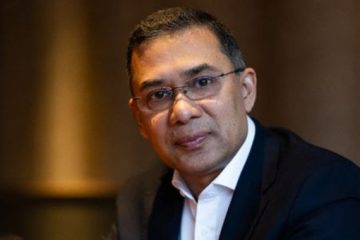It fails to treat polluted river water; over 10,000 ended up in diarrhoea hospital
 In the broiling midday sun, Rashida Khatun was standing in the queue in front of the Sabujbagh Buddha Temple with two big plastic jars and a steel pitcher in her hands. The temple authorities were providing drinking water from their own pump to the poor, who depend on the Water and Sewerage Authority (Wasa) for water.
In the broiling midday sun, Rashida Khatun was standing in the queue in front of the Sabujbagh Buddha Temple with two big plastic jars and a steel pitcher in her hands. The temple authorities were providing drinking water from their own pump to the poor, who depend on the Water and Sewerage Authority (Wasa) for water.
“The Wasa water is so stinky that we cannot drink it. Honestly, I hate to even touch their water,” said Rashida Khatun.
Finding no other means, they use Wasa water for ‘cleaning’ purpose and go to the temple for drinking water. The Wasa used to treat the waters of the Buriganga and Shitalakshya rivers and supply the treated water to the city dwellers. Now the waters of these two rivers have become so polluted that even after applying additional chemicals Wasa cannot treat the water perfectly.
Speaking anonymously, a Wasa official said, “With all technologies we have, we cannot treat ammonia found in the waters of these rivers.”
However, the Wasa chief engineer claims there is no health risk in their supply water.
“I know our water is stinky, but it’s safe hygienically; maybe not aesthetically as it stinks,” said Chief Engineer Md Nurul Haque.
Over 10,000 diarrhoea patients, who drank polluted water, were committed to the ICDDR,B cholera hospital, while 30 of them died in this season only.
The hospital sources say this year the number of such patients is much higher than that of the previous years.
Experts say drinking this stinky water for long time increases the risk of different diseases like cancer, liver diseases and jaundice.
A study conducted by IWM and supported by the World Bank found “extremely high organic pollution” in the waters test results. The report also mentions high concentration of total dissolved solids, chloride, sulphate, ammonia, cadmium and the heavy metal chromium in the polluted water.
In some areas including Hazaribagh, Tarabo and other localities near the Buriganga concentration of some chemicals are found at higher than the Bangladesh standard, the report mentions.
The Institute of Water Modelling (IWM) conducted the study for the World Bank as their internal report in 2006 but they never published it.
Of the water supplied by Wasa, only 15 percent comes from surface water sources and the rest they lift by deep water pumps.
Due to pollution in surface waters, the city dwellers mainly have to depend on groundwater. It has been observed that excessive withdrawal of groundwater is lowering the city water table for long.
Another study of Bangladesh Agriculture Research Council shows the groundwater table has fallen one metre or more posing a great threat to the sustainability of the city itself.
Asked about the quality of drinking water, M Minnathullha, chief of the environmental programme of the WB, briefly said the quality of drinking water in the city is not good.
The demand for fresh drinking water is rising rapidly thanks to increasing population and industrial growth.
Dhaka is projected to be the world’s fourth most populous metropolis by 2020 with 22 million inhabitants, according to the United Nations Population Fund.
Currently, Wasa is producing around 1,200 Ml/day for the urban water supply from about 423 deep tube-wells.
The Wasa is already facing problems in extracting groundwater this year in many areas including Mirpur, Shyamoli, Khilgaon and Basabo, insiders say.




















